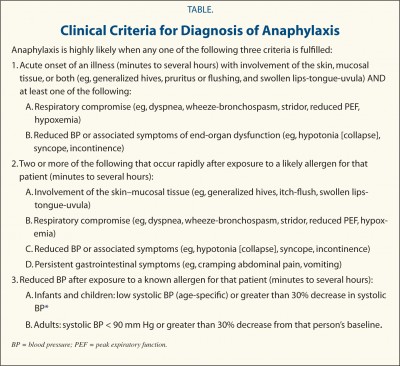The MastAttack 107: The Layperson’s Guide to Understanding Mast Cell Diseases, Part 73
86. What is the role of the spleen in systemic mastocytosis? (Part Two)
- The spleen is basically a big filter for the blood. In the previous post, I mentioned one of its functions: to catch certain types of infections in the blood that your immune system has a hard time fighting in other ways. It does some other things, too. The spleen stores red blood cells and platelets so that your body has a backup supply in case of hemorrhage or trauma.
- The spleen also looks for something else when it filters the blood: damaged or abnormal blood cells. Damaged or abnormal blood cells get caught in the spleen so that they don’t continue to circulate in the blood. The spleen then breaks down those bad cells and uses materials from them to help make new healthy cells.
- If there are lots of abnormal cells, then the spleen gets swollen because it is holding many more cells than usual. This is why the spleen swells in diseases where the body has abnormal cells in the blood stream. How much the spleen swells is directly proportional to the amount of abnormal cells in the blood.
- For example, in acute leukemias, there are tons of abnormal cells circulating in the bloodstream. The spleen catches as many as they can. Because there are a lot, the spleen swells very quickly. In chronic leukemias, there are still abnormal cells, but they are produced at a much slower rate over time. This means that the spleen has more time to break down the broken blood cells it catches before it catches more of them. In these scenarios, the spleen swells more slowly over a longer period of time.
- You can apply this understanding directly to mastocytosis. Patients with indolent systemic mastocytosis have fewer mast cells than those with smoldering or aggressive systemic mastocytosis, or mast cell leukemia. The patients with indolent systemic mastocytosis make some abnormal mast cells. The spleen will catch the ones it sees and remove them from the bloodstream. But mast cells don’t live in the blood and they only pass through the bloodstream for a short time. So the spleen has time to break down some mast cells before it catches more.
- When a patient with indolent systemic mastocytosis starts to produce higher numbers of mast cells, that’s when you see the spleen starting to swell. That’s why spleen swelling is a B finding for systemic mastocytosis – it is an indicator that the body is making more mast cells than before, and could be headed toward a more aggressive form.
- The number getting filtered out by the spleen increases so the spleen swells. The more abnormal mast cells produced, the more the spleen swells.
- Additionally, when the bone marrow is making lots of aberrant mast cells, they are introduced into the blood stream in much larger numbers than normal. This means that they are more likely to get caught in the spleen than in a person with indolent systemic mastocytosis.
- In smoldering systemic mastocytosis, the body makes more mast cells than in indolent systemic mastocytosis, so it’s more common for the spleen to swell. In aggressive systemic mastocytosis, the bone marrow is producing a lot of mast cells and many of them are caught in the spleen over a short period of time. In mast cell leukemia, even more are made and caught, so the spleen becomes clogged up very quickly.
- When the spleen is swollen from catching bad mast cells, the swelling causes it to break or damage other, healthy blood cells, too. This happens because the swelling of the spleen pinches the pathway for cells through the spleen so the other cells have to squeeze through, causing them to break. This is why patients with more advanced forms of systemic mastocytosis like smoldering systemic mastocytosis, aggressive systemic mastocytosis, and mast cell leukemia are more likely to have low blood cell counts than people with indolent systemic mastocytosis.
- In addition to the risk of low blood cell counts, the swelling and dysfunction of the spleen can also contribute to portal hypertension. This is when there is high pressure in the blood vessel system that connects the GI tract, the pancreas, the spleen and the liver.
- Portal hypertension is also a C finding for aggressive systemic mastocytosis. This means that a person who has this because of mastocytosis receives a diagnosis of aggressive systemic mastocytosis.
- Portal hypertension can affect liver function and can cause fluid that should be in the liver to end up in the general abdominal space, a condition called ascites.
- Splenic swelling often causes no symptoms. It is unusual for it to cause pain in the general area of the spleen. Left shoulder pain sometimes occurs if the spleen is very swollen.
- The general rule of thumb is that the spleen has to be twice its normal size for it to be felt on a physical exam. The exact amount of swelling is usually measured by an ultrasound.
- Spleen swelling does not usually require treatment. Generally, unless there is hypersplenism, it is not treated.
- The treatment for hypersplenism is splenectomy, surgical removal of the spleen. The spleen is removed mainly for two reasons: to decrease portal hypertension, thereby reducing stress on the liver; and to prevent the spleen from rupturing, which can cause fatal hemorrhage.
This question was answered in two parts. Please see the previous post for more information.
For additional reading, please visit the following posts:
The Provider Primer Series: Diagnosis and natural history of systemic mastocytosis (ISM, SSM, ASM)
The Provider Primer Series: Natural history of SM-AHD, MCL and MCS
